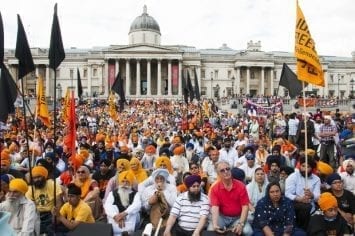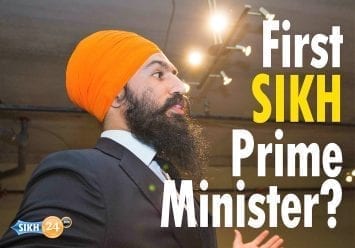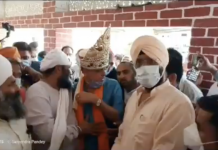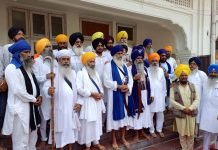


There is a good prospect that after June 8th when the people of the UK participate in a General Election, we are likely to have our first ever turban wearing Member of Parliament.
This will be a good thing as it will be one further step towards a parliament that reflects the diversity of the electorate. Though I broadly agree with the general principle that for democracies to function properly they should be representative of the population, I am unsure that external physical appearance should be the prime criteria for casting ones vote. For example, as a socialist, if I have the choice between supporting a turban wearing Sikh candidate standing as an independent or for the Conservatives and a non-Sikh or non-turban wearing Sikh standing for Labour, who should I support?



Of course political ideology, though important, should not be the only criteria, and the track record of the candidate should be considered. But, to simply decide to vote based on a politics of identity seems to me to be equally problematic.
One of the arguments being made for voting for turban wearing Sikhs is that we should have more of them in Parliament; and often the Canadian parliament, which has turban wearing Sikhs in the highest of offices, is offered as an example to aspire to. Whilst again, I recognise and sympathise the general desire for diversity, I am afraid, simply focusing on outward identity itself could be mistake. Yes, we have wonderful examples in such personas as Jagmeet Singh in the Ontario Parliament and Harjit Sajjan who is the Canadian Defence minister. But if we look beneath the turban, we find in both these examples, persons of exceptional character, integrity, courage and ability.



But there are examples to the contrary as well. We know, for example, the presence of turbans in Punjab and Indian political systems is and has not been a guarantor of Sikh interests. Indeed, it was the turban wearing Chief Minister of Punjab, Beant “Singh” and his ‘trusted’ Chief of Police, K.P.S.Gill that was instrumental in the extermination of a generation of Sikh youth in the 1980’s through a policy of extra judicial killing illegal torture. Even today, we are seeing at the head of many ‘respected’ Sikh institutions and seminaries men displaying a multitude of turbans of different colours and designs overseeing what many critical commentators suggest is the systematic Brahminification of the Panth.



The turban for Sikhs is equivalent to a crown and is the symbol of respect, dignity and leadership or’ sardari’. Sadly, because of the growth of global jihadism and most people’s inability to distinguish the nuances of turban styles, it has become a symbol of terror and mistrust. And the greatest tragedy is that the Sikhs, a generally peace loving and law abiding community, the world over, have become the targets of a mistaken identity. Add to this social media videos of turban wearing old and young men with flowing bears attacking gurdwaras and preachers, one could be accused of being somewhat weary of supporting candidates simply because they are wearing a turban. Yes, bring on the turbaned Sikhs, but make sure they have something to offer beneath the turban that can not only protect but extend the honour of our crown that was bestowed upon us by our Gurus to serve humanity and fight all kinds of inequalities, discrimination and oppression.
Any candidate, turban wearing or not, who can demonstrate a commitment to such high ideas will certainly get my vote on June 8th.





Dr. Gurnam Singh has put it very well. Of course turban is essential but a sikh is defined by his actions and deeds and his core beliefs. As mentioned above we have been hurt more by these fake turban wearing sikhs.